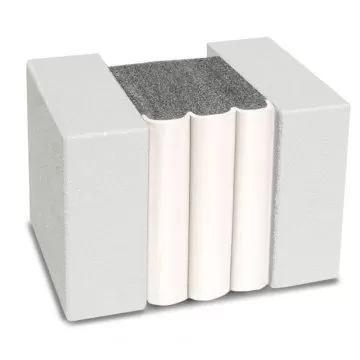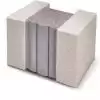Emseal Chemseal: Chemical-Resistant Joint
Manufactured to resist the harsh conditions found when expansion systems contact non-purified water or liquid-suspended chemicals. Some examples are:
- Waste Water Tanks
- Spill Containment
- Industrial Testing Tanks
Emseal Chemseal: Chemical-Resistant Joint
Emseal Chemseal is a chemical resistant sealant and expansion joint, Emseal Chemseal is a precompressed, primary seal for retrofit and new structural expansion joints and construction joints where contact with harsh chemicals and chemical dilutions is expected. Questions? Contact Us.
The standard coating is a chemical-resistant silicone that is NSF compliant which also allows it to be installed in areas which are sensitive to food contamination. Chemseal can be manufactured with a polysulfide coating in place of the standard silicone seal. While polysulfide may offer a wider range of chemical resistance, it necessitates a more complicated installation procedure. Consult EMSEAL for applications involving a particular expected chemical exposure and head pressure.
NOTE: EMSEAL suggests the use of Submerseal for most submerged applications. Submerseal’s single bellows construction and increased silicone thickness makes it suited to accommodate the head-pressure of continuous submersion. When contact with extraordinary chemical compositions is expected, Chemseal may provide a suitable alternative. Consult EMSEAL.
- Chemical Resistant
- Watertight
- Non-Invasive Anchoring
- NSF-compliant
Chemical Resistance — Chemseal is coated with a chemical resistant silicone or if conditions dictate, a polysulfide.
Watertight — Chemseal is installed with the tensionless bellows facing the liquid ensuring that watertightness is achieved.
Non-Invasive Anchoring — there are no hard metal-to-substrate connections with Chemseal. This includes embedded pins, anchors, screws, bolts or tracks, trays or rails. The system is locked to the joint faces by means of the:
1) Backpressure of the foam
2) The epoxy adhesive
3) The injected sealant band at the joint face to foam-and-bellows interface.
NSF Compliant — Complies with FDA regulation CFR 177.2600 covering indirect food contact
- Produced by infusing a cellular foam base material with a hydrophobic, microsphere-modified acrylic impregnation, and coating the surface with a high-performance silicone or polysulfide sealant to suit the application.
- The external sealant facing is factory applied to the foam at a width greater than maximum joint extension and is cured before final compression.
- Silicone or polysulfide application and curing takes place in a temperature and humidity-controlled factory environment. This ensures, in contrast to field applied liquid sealant and backer rod installations, that no movement takes place during curing that can cause deformation or stresses in the sealant material.







